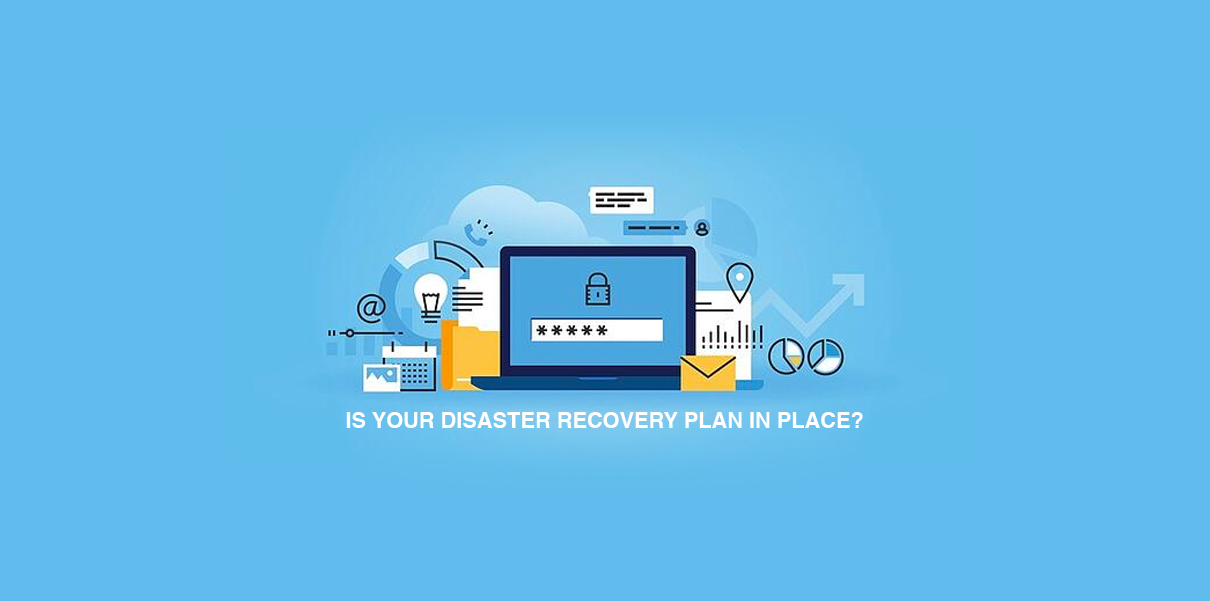Prepare for the worst and hope for the best. It’s good advice, especially for small businesses trying to keep all facets of their IT infrastructure running like clockwork. But all too often companies keep going on a hope and a prayer without making provisions for potential disasters. Murphy’s Law is still in effect, and we need to be prepared. Every organization should have a robust disaster recovery plan in place. Those who don’t may be among the 60% of businesses that never recover after a disaster.
Assessing the Risks
You should be aware that every piece of hardware and software in your IT environment is susceptible to failure at any time. You may have the latest application with all the bells and whistles, but if it goes down for any length of time, you have nothing but lost income and a tarnished reputation. Have you thought of what might happen in the worst case? Experts recommend disaster recovery planning that imagines as many potential disaster scenarios as possible -- because you just never know.
The Center for Disease Control (CDC) took a light-hearted approach to disaster preparedness in their 2011 exercise “Preparedness 101: Zombie Apocalypse”. Your planning committee may decide to skip the zombie scenario (you can never be too careful), but there are plenty of other risks that you may be more likely to face in the coming months or years. What would your business do in the case of a fire? A flood? An earthquake? A blackout? A major cyberattack? The list goes on.
The first step to disaster preparedness is planning. As the CDC says, “Get a kit. Make a plan. Be prepared.” But to make effective plans, your team should spend adequate time brainstorming. Bring your IT personnel in with your business processes people and figure out what’s really important. Which processes need to keep running no matter what? Which IT components support those processes? When you’ve identified the critical elements, it’s time to think about how to mitigate the impact of losing them.
At Titan Tech, we provide Cincinnati IT services aimed at helping local businesses survive and thrive. We’d be happy to take a close look at your current environment and work with you to prepare for whatever apocalyptic events may come your way.
The Need for Redundancy
You keep a spare tire in your car for a reason. Each of the tires that you currently ride on are single points of failure (SPOF). If you lose any of those four tires, you won’t get very far. With a spare in your trunk (and a little car repair savvy), you can take care of the pit stop and be on your way in a matter of minutes. Similarly, if a component of your IT infrastructure goes down, you need to have a backup ready to take over with minimal disruption. Time is money, and the longer the delay in failing over to the secondary device or software, the greater potential you have for financial or reputational loss.
Data backup is another form of redundancy. No business can afford to lose critical data. That’s why it’s essential to have redundant databases in offsite locations in case something happens. With cloud computing nowadays, there are many ways to configure effective backup solutions for all your important information.
Redundancy is such an important part of IT that you should implement it all throughout your infrastructure. Do you have a single internet connection to one of your branch offices? Better set up a second one. Do you have backup DNS? If your single domain name server goes down, you can forget about internet browsing. If your only data center goes down, how can you keep delivering IT services? Better set up a backup. You need to look long and hard for those single points of failure in your systems and networks. Those are the ones that will cost you when disaster strikes.
Business Continuity Is Everything
Disaster recovery (DR) is a subset of business continuity (BC). The two terms are often used together and referred to as DR/BC. Disaster recovery is about bringing services back into operation after a disaster. Business continuity is about keeping business processes in operation through a disaster.
The optimal situation is when your IT environment is set up with an automatic failover to secondary components and systems in the case of a disaster. A failover is when a secondary system takes over the functions of a primary system. Automation can make this happen with no human intervention at all.
Suppose you have a critical software application housed in the cloud. A severe weather event on the east coast takes down an entire data center. At this point you are on a list of a major cloud provider’s clients waiting for everything to go green again. If you employ a multi-cloud environment, however, you can have your cloud application failover to the secondary provider in an instant. The key is to keep business processes running even when the worst does happen. That’s what will save you in the long run.
Conclusion
Disasters don’t just happen somewhere else. They could happen anywhere, and in a variety of forms (like the “frying squirrel” incident that took out Yahoo!’s Santa Clara data center in 2010). If you don’t think that bad things can happen to your Cincinnati or Dayton business, think again. One internet writer recounts “The 6 Most Horrific Natural Disasters And Accidents in Ohio”:
- The Great Flood of 1913
- Ohio River Flood of 1937
- Great Appalachian Storm of November 1950
- 1965 Palm Sunday Tornado Outbreak
- Cuyahoga River Fire
- The Great Blizzard of 1978
We don’t have a crystal ball to predict what disasters may be coming in 2020 and beyond. That’s why we advise you get your disaster plan in place now. Be prepared for anything. Call Titan Tech today and we’ll be glad to help with that.

